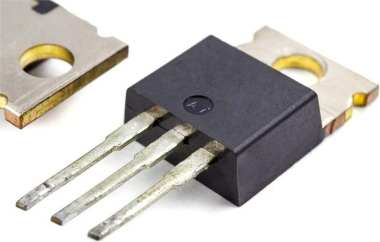News
What Are Field Effect Transistors?

In today's electronic components industry, Field Effect Transistors (FETs) are indispensable key components. They are not only widely used in consumer electronics, automotive electronics, communication devices, and industrial control systems, but their unique characteristics also make them vital for enhancing the performance and efficiency of electronic devices. This article will cover the definition, types, working principles, characteristics, advantages, and applications of FETs.
Catalog
I. What Are Field Effect Transistors?
II. Types of Field Effect Transistors
IV. Characteristics and Advantages
I. What Are Field Effect Transistors?
Field Effect Transistors are semiconductor devices that use an electric field to control the flow of current. They have three main terminals: the source, the drain, and the gate. FETs are known for their high input impedance, which allows them to perform well under low power conditions—an essential feature for modern electronic devices. Unlike bipolar junction transistors, FETs are voltage-controlled rather than current-driven.
II. Types of Field Effect Transistors
FETs come in several types, each with unique features and applications:
· Junction Field Effect Transistors (JFET): JFETs are the earliest type of FETs, using a PN junction to control the gate. They offer high input impedance and low noise levels, making them ideal for low-frequency amplifiers.
· Metal-Oxide-Semiconductor Field Effect Transistors (MOSFET): The most commonly used type of FET in modern electronics. They can be classified as Enhancement Mode or Depletion Mode MOSFETs. MOSFETs have high switching speeds and low power consumption, making them suitable for digital circuits, power amplifiers, and switching power supplies.
· Insulated-Gate Bipolar Transistors (IGBT): IGBTs combine the advantages of MOSFETs and bipolar junction transistors, enabling them to handle high voltages and currents. They are typically used in power electronics applications, such as inverters, electric vehicles, and industrial motor control.
III. Working Principle
FETs control the flow of current using an electric field. The voltage applied to the gate alters the strength of the electric field, thereby regulating the current flow from the source to the drain. In a MOSFET, the gate is insulated from the source and drain by a thin layer of oxide (usually silicon dioxide), ensuring that there is no current flow between the gate and the rest of the circuit; it solely relies on the electric field for control.
IV. Characteristics and Advantages
FETs have several advantages due to their unique structure:
· High Input Impedance: FETs can have input impedances reaching into the megaohms or higher, minimizing input current draw.
· Low Power Consumption: They consume minimal power during switching and control operations, making them ideal for portable and energy-efficient devices.
· Fast Switching: MOSFETs, in particular, excel in high-frequency applications, making them suitable for switching power supplies and high-speed signal processing.
· Compact Size: The small size of FETs facilitates their integration into miniaturized circuits.
V. Applications
FETs play a critical role in various fields:
· Consumer Electronics: Used in amplifiers and switching circuits in devices like smartphones, tablets, and laptops.
· Communication Devices: Preferred in RF amplifiers and modems due to their low noise properties.
· Automotive Electronics: Essential for motor control, inverters, and battery management systems in electric vehicles, contributing to energy efficiency.
· Industrial Control: Commonly used in power conversion equipment and automation systems for high-power applications.
VI. Conclusion
Field Effect Transistors are central to the electronic components industry. Their high input impedance, low power consumption, and fast-switching capabilities make them highly effective in a wide range of applications, from consumer electronics to industrial automation. As semiconductor technology advances, the performance and scope of FET applications continue to expand. Innovations in nanotechnology and wide-bandgap semiconductor materials, such as silicon carbide (SiC) and gallium nitride (GaN), are set to further enhance their capabilities, promising greater thermal stability, high-frequency performance, and efficiency for future electronic products.



